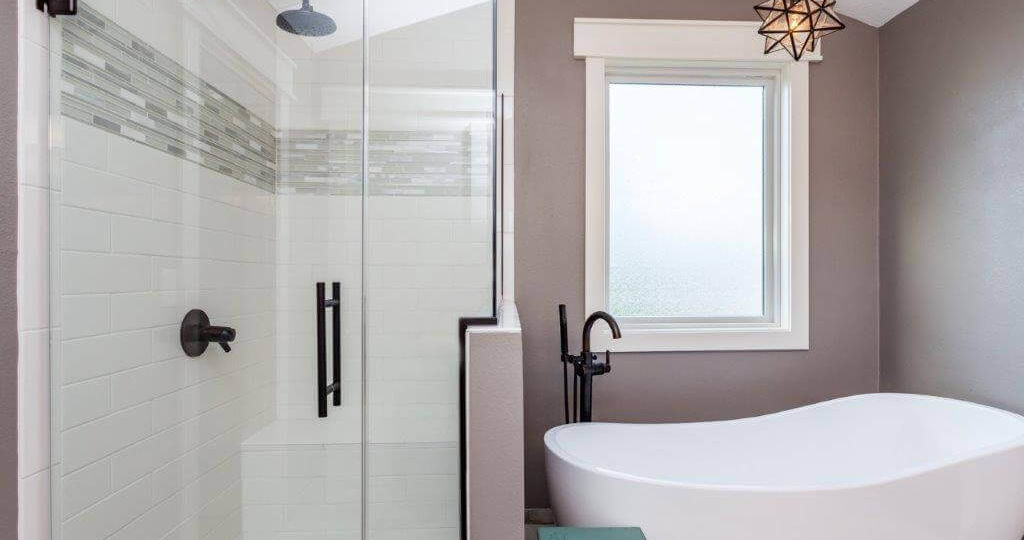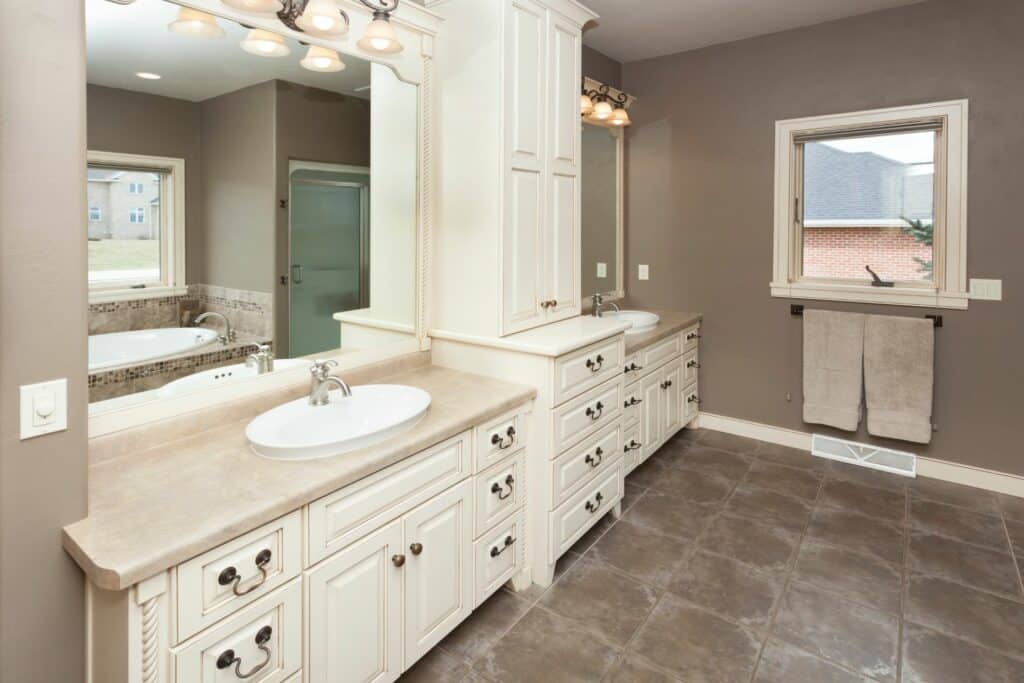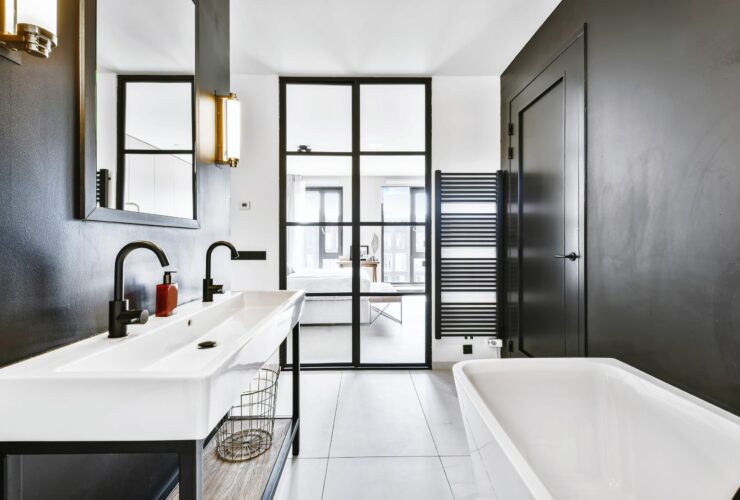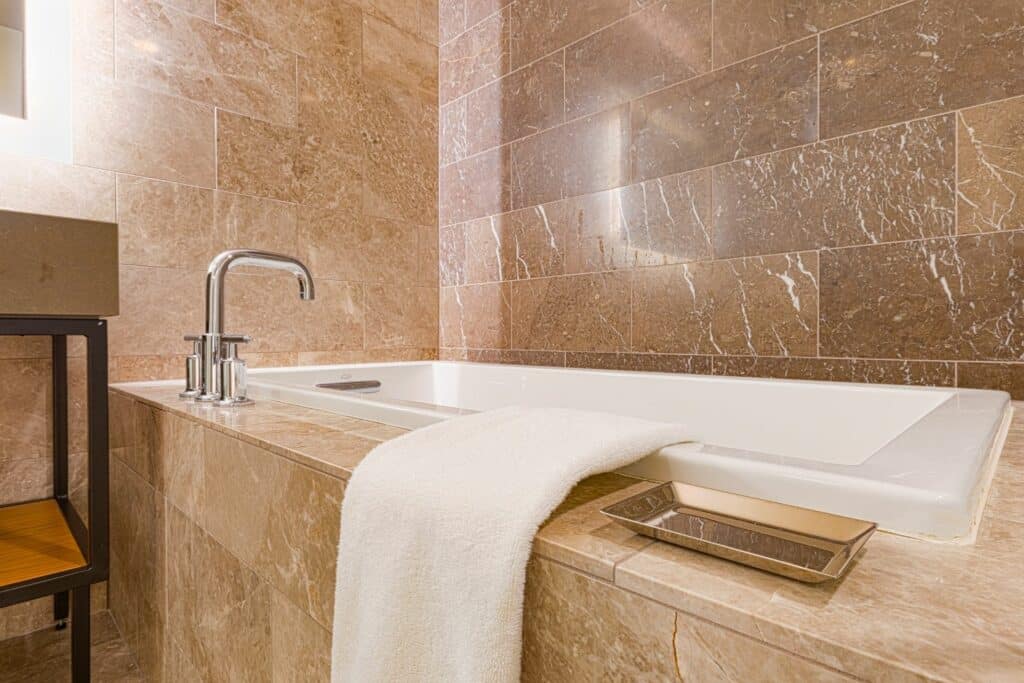
A bathroom remodeling project might seem small, but it is definitely not — both in terms of time and money spent on the job. There’s a significant financial investment there that requires careful considerations and research before you go all in.
Before you start making a checklist, there are several aspects to consider. Broadly speaking, you will need to focus on the budget, design, plumbing, and the hiring of the contractor. Different peculiar problems tend to arise once we begin, and can be addressed by a professional as needed. For instance, you might have storage issues but as it may turn out, your bathroom may not necessarily have space to accommodate the clearance for a vanity. These kinds of issues don’t have a “One size fits all” answer — it depends on many other things.
However, once you understand the major considerations — you will be better equipped to explain and solve that problem with the help of a designer.
In this ultimate bathroom guide, we explain everything you need to remodel a bathroom in 2021. It tackles many different aspects of the bathroom remodel and might be the only bathroom remodel guide you will ever need.
Budget Considerations
1. Evaluate Your Finances
You can research the average bathroom remodeling costs for your area. Yet, every remodeling project is unique. How much you will end up spend will vary depending on the space available, the scale of the project, and the quality of materials used. Before the remodeling starts, think about what can be spent and then ask for an estimate from several contractors.
2. Consider the Essentials
Bathroom remodeling expenses will range depending on what you plan to get rid of/replace and what accessories you are thinking to include. You can cut some of the extras of your renovation plan, depending on your budget. The little luxuries are nice but might not add to the room’s functionality.
3. Stay on Track with the budget
Once you have finalized on your budget, keep up with the remodeling costs in a spreadsheet to make sure you are staying on track. Keep yourself and your contractor accountable to the budget that is agreed upon and track actual spending against budgeted amounts.
Related: Bathroom Remodel Made Affordable: 8 Hacks for a Makeover Under $20k
Design Considerations
4. Slip-Resistant Floor
The Bathroom would remain wet most of the time. Thus, it is wise to choose a slip-resistant material to avoid falling when getting out after a bath. Small tile and wide grout lines in the shower would create the friction that would keep you safe and almost impossible to slip. There are many beautiful and inexpensive flooring options that would go with any design. If you live in a region that stays cold, install electric heated flooring under the tile to make your bathroom warm and relaxing year-round.
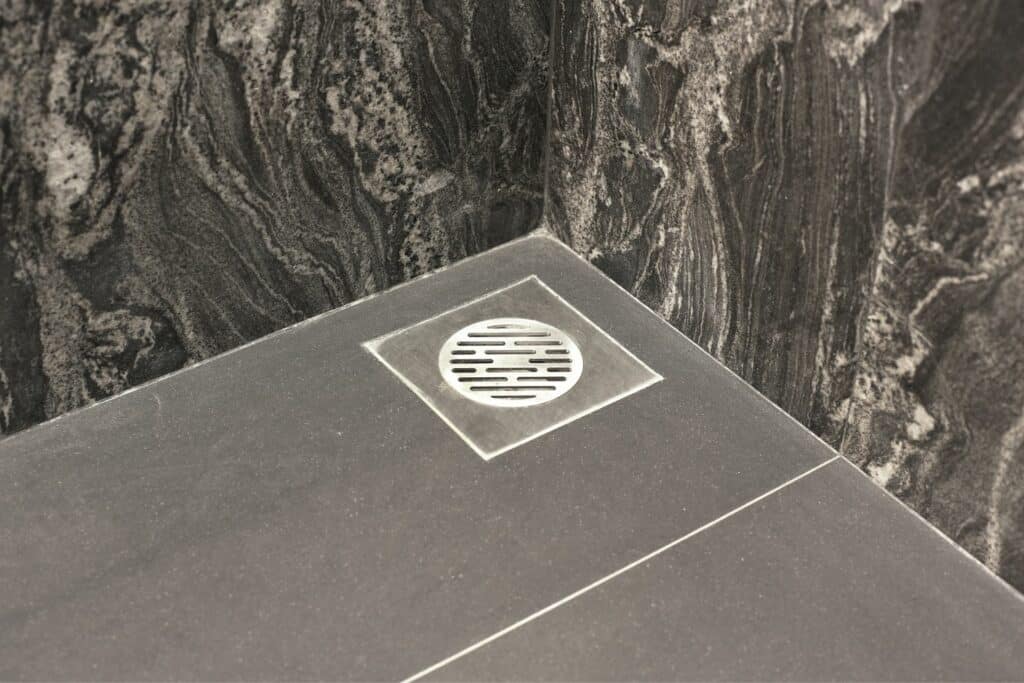
5. Cabinetry
Storage in the bathroom is very essential so that valuable counter space remains clear and clean. To avoid warping in the humid, moist bathroom environment, you need to invest in the quality cabinet. These drawers and cabinets will be used daily, so you need quality materials and good craftsmanship to maximize these features’ lifespan.
6. Countertops
A low-maintenance countertop option which can be used in the bathroom is granite. You might have to spend a little more on it. It works wonders when it comes to making a statement. The material is really easy to clean. As the bathroom counter space is typically less square footage, the investment is less pricey than what is typically spent on kitchen counters.
7. Paint vs. Tile
Depending on your bathroom remodel budget, you can either go with tiles on the walls or get a fresh coat of paint for a clean look.
If you don’t have the budget to add tile, fear not as you can still invest in high-quality paint that will keep out moisture and prevent mold and mildew from growing.
8. Lighting
When choosing lighting for your bathroom remodeling, you can opt for a more natural white light for LED, fluorescent, or halogen. This lighting will make grooming and makeup application easier.

Plumbing Considerations
9. Shower and Tub Drain Size
Think about how large would you want the diameter of your shower and tub drain to be. A 1.5- inch drain is the industry standard and will typically be the first choice of most contractors. Though problems like the drain getting clogged with hair, soap scum, and other debris might arise. (as it is a very small drain). Although a larger drain might be expensive upfront, but it could save you money in the long run.
Related: Should I Have a Shower or a Tub in My Bathroom or Both?
10. Shower Flooring Optimized to Drain
If you ask us, we wouldn’t recommend installing the shower flooring as a DIY thing. If done by a novice, the slope might be tilted in the wrong way, causing drainage issues. Water can also accumulate and pool in your shower. This can cause potential slipping hazards, and promote the growth of mold and mildew as well.
Contractor Considerations
11. Ask for References
Before you invite some people to remodel your bathroom, do some homework. Collect references from friends and owners who have been through this. You need to look out for unbiased feedback and guaranteed reviews.
It is important to ask any potential contractor for pictures of previously completed projects/renovations. It is important to find out what percent of work a contractor does is actually bathroom remodeling.
12. Insurance Coverage
When you start asking for quotes, make sure you also ask remodeling companies for proof of insurance. As a result, in case of any liability, injuries to the workers, or even property damage — you will be protected.
Make sure you interview several contractors for your remodeling project and request for written proposals, estimates, and a set start and end date for the job. Every aspect of your remodel needs to be covered by the contractor’s insurance. The task of paying for these materials or fixtures that arrive broken or are installed properly should not be on the homeowner.
